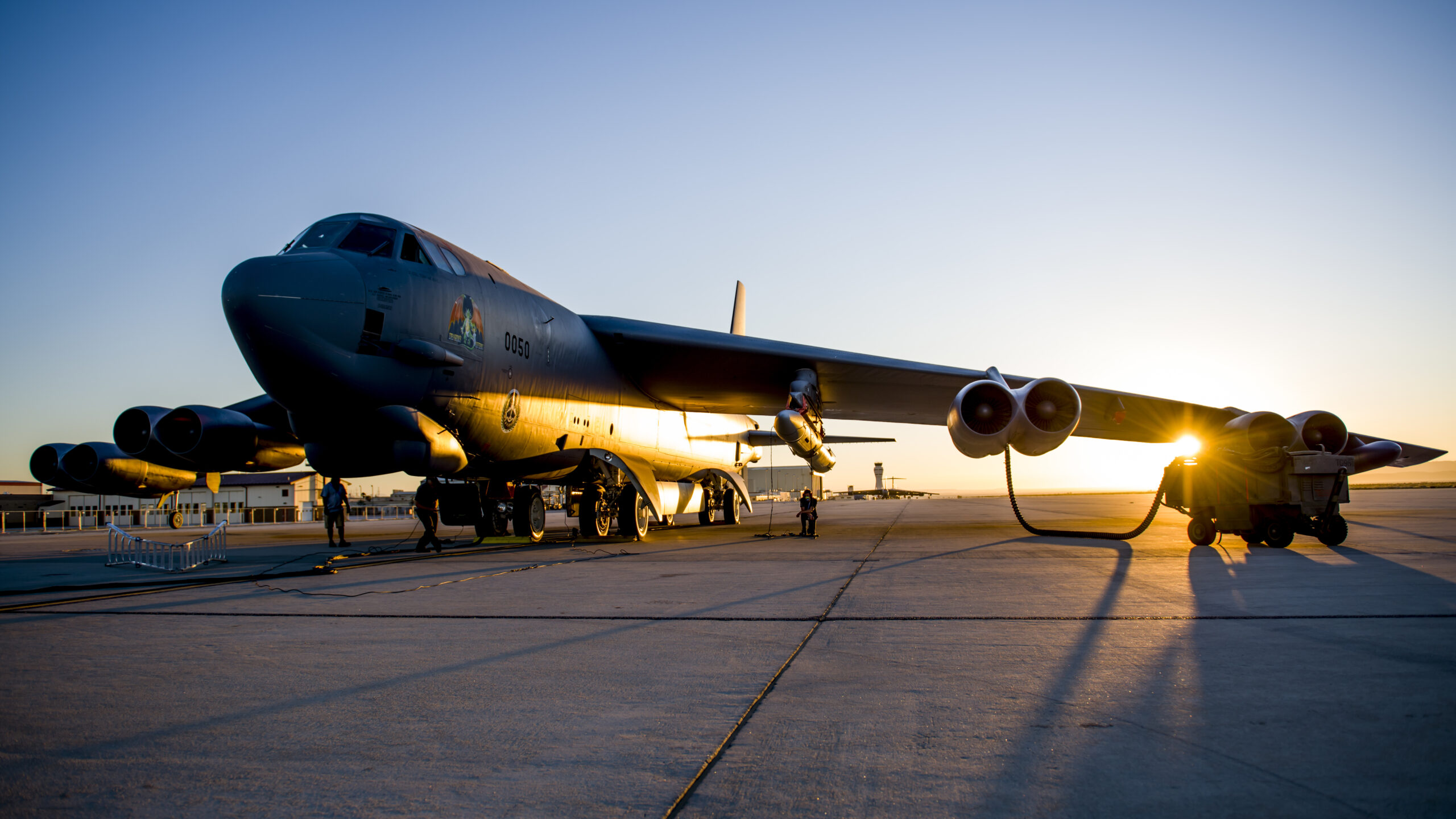
A B-52H assigned to the 419th Flight Test Squadron is undergoes pre-flight procedures at Edwards Air Force Base, California, Aug. 8, 2020. The aircraft conducted a captive-carry flight test of the AGM-183A Air-launched Rapid Response Weapon. (Air Force/Giancarlo Casem)
WASHINGTON: The US Air Force has no plans to buy its first Lockheed Martin-made AGM-183A Air-Launched Rapid Response Weapon in the fiscal 2023 budget, a signal it has hit pause on what was once planned to be its first operational hypersonic weapon.
According to Defense Department budget documents, the Air Force has requested $46.6 million to procure one ARRW missile in FY23. But the service instead will transfer that “sliver of procurement” funding back into the research and development portion of the budget, and no procurement of ARRW is planned this year, Maj. Gen. James Peccia, the Air Force’s deputy assistant secretary for budget, said during a budget briefing on Monday.
When asked whether the Air Force had plans to cancel the program, Peccia responded that the service is “not walking away” from ARRW but did not express any plans to buy the missile in future budgets.
“It’s funded in FY23. And then we’ll make an assessment after that,” he told reporters.
Air Force Undersecretary Gina Ortiz Jones added that the Air Force remains committed to ARRW as well as to the Hypersonic Attack Cruise Missile, a hypersonic weapon that uses air-breathing scramjet propulsion, contrasting with the boost-glide ARRW that uses a rocket booster to get up to speed.
“I think when it comes to hypersonic weapons, we’ve got to have the right mix,” she said. “And that’s why you see RDT&E funding for both of those.”
The lack of funding in the FY23 budget marks a major shift for the Air Force, which had requested $161 million in FY22 with the hopes of buying the first 12 ARRW missiles. However, congressional appropriators halved that sum in the FY22 spending bill that was ultimately signed into law earlier this month — erasing all hope of purchasing the hypersonic ARRW this year.
There have also been signs that the Air Force was losing faith in the program. Since becoming the service’s top leader last summer, Air Force Secretary Frank Kendall has repeatedly signaled that he had questions about the types of hypersonic weapons in which the service had previously invested.
“ARRW still has to prove itself,” Kendall said at the McAleese and Associates conference earlier this month. “So we need to do that, and we also need to take a larger look at what’s the right mix for the future. What are the things that will need investment?”
Kendall’s concerns about ARRW occurred as the test program suffered a series of setbacks, including three failed booster tests last year. The Air Force has yet to publicly define the problem that caused the most recent test failure in December, when the missile failed to launch.






















